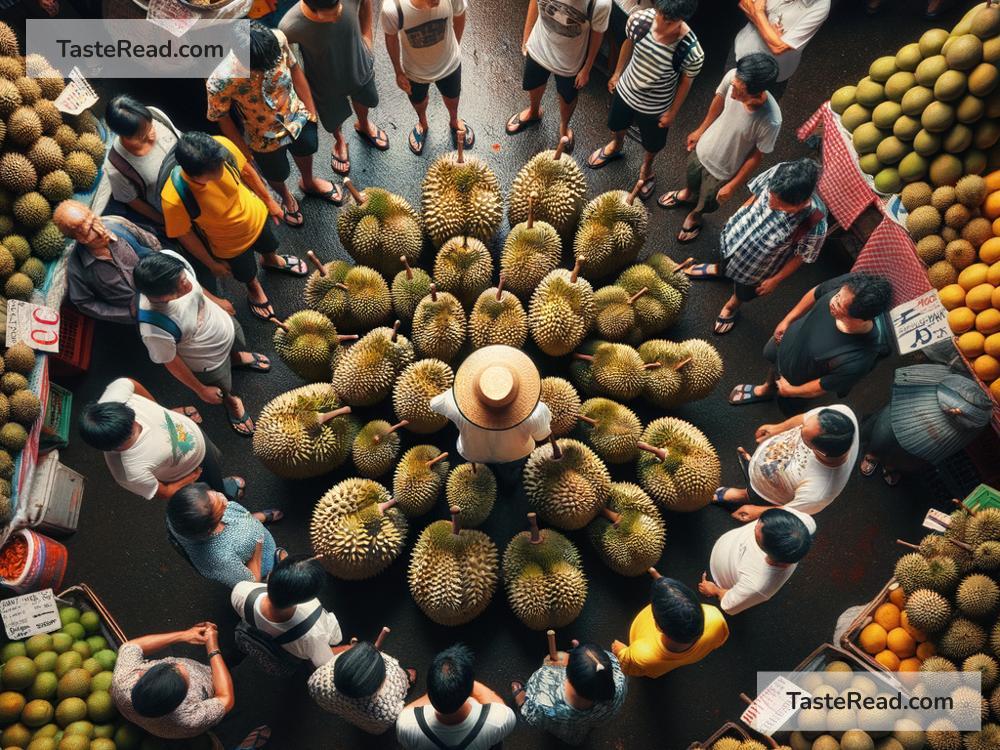The Curious Story of Durian in Southeast Asian Markets
Durian is one of the most famous and fascinating fruits in Southeast Asia. Known as the “King of Fruits,” it has a reputation that sparks curiosity, love, and even controversy. Some people adore its creamy texture and unique flavor, while others can’t stand its strong, almost overwhelming smell. Whether you love it or hate it, durian is a fruit with a remarkable story—and it plays a big role in the markets and culture of Southeast Asia.
What Is Durian?
Durian is a large fruit covered in a thick, spiky shell. It grows on trees in tropical climates and is popular in countries like Thailand, Malaysia, Indonesia, the Philippines, and Vietnam. Inside the shell, the fruit is yellow or pale, with a custard-like texture and a distinctive smell.
The smell of durian is what makes it so famous—and polarizing. People describe it in many ways, such as “cheesy,” “garlicky,” or even “like rotten onions.” Because of this intense odor, durian is banned in some public places like hotels, trains, and airplanes. But for those who love it, the taste is worth the smell. Durian’s flavor is a complex mixture of sweet, savory, and creamy, with hints of caramel and almonds.
A Cultural Icon
Durian is not just a fruit—it’s deeply rooted in the culture of Southeast Asia. In many countries, people see durian as a symbol of wealth and prestige because of its price and unique qualities. Some locals call it “the gold of the tropics.” Durians are often exchanged as gifts, especially during festive occasions.
Farmers in Southeast Asia take great pride in growing durian. There are many varieties of the fruit, each with its own flavor, texture, and price. In Thailand, varieties like “Monthong” and “Chanee” are highly prized. Malaysia is famous for its “Musang King” durian, which is considered one of the best types in the world.
Durian farming is not easy. The trees take several years to grow, and the fruit is delicate and requires careful handling. But farmers are willing to invest time and effort because durian fetches high prices in both local and international markets.
A Star in Southeast Asian Markets
Durian is a major attraction in Southeast Asian markets. Whether you visit traditional wet markets or modern fruit stalls, it’s hard to miss the sight of these spiky fruits stacked high and ready for sale. Vendors sometimes compete to offer the freshest durians, and buyers are often seen choosing the best ones by smell, touch, or tapping the fruit to check its ripeness.
Durian lovers buy the fruit fresh and eat it straight from the shell. However, markets also sell durian in many forms, including frozen, dried, and processed into snacks. You can find durian-flavored ice cream, cakes, candies, and even coffee. Vendors are very creative in making durian products, which allows more people—including tourists—to experience the fruit in different ways.
Durian is also exported internationally, especially to China, where demand for the fruit has exploded in recent years. This has created a billion-dollar industry for durian farmers and traders in Southeast Asia. In some countries, durian farmers even have waiting lists for buyers and auctions for the rarest varieties.
The Struggle Between Love and Hate
While there are many durian fans, there are also plenty of people who dislike it. The fruit’s powerful smell is often the main reason people avoid it. In fact, some people can’t even stand being in the same room as durian! Because of its divisive nature, durian has inspired humorous debates and memes on social media.
But even those who don’t like durian can’t deny its impact on Southeast Asian markets. It helps boost local economies, connects communities, and attracts tourists who are eager to try the fruit and share their reactions online.
Durian as a Travel Adventure
For many travelers in Southeast Asia, trying durian is a must-do activity. It’s a cultural experience as much as it’s a culinary one. Tourists often join durian-tasting tours, where guides explain the history, varieties, and techniques for picking the best fruit. Taste-testing durian can be entertaining, as first-timers often react with surprise—sometimes delight and sometimes shock.
Durian festivals are also popular in several countries. These events celebrate the fruit and feature competitions, performances, and community gatherings. For example, Malaysia has an annual Durian Festival that attracts both locals and international visitors.
Conclusion
The curious story of durian in Southeast Asian markets reflects the region’s vibrant culture, agricultural practices, and unique way of life. Whether you love durian or avoid it at all costs, there’s no denying that it has a special place in the hearts—and markets—of Southeast Asia.
For locals, durian is more than food—it’s a tradition, an economic opportunity, and a source of pride. For tourists, it’s an unforgettable adventure and a chance to connect with local culture. So, the next time you visit Southeast Asia, don’t be afraid to approach this spiky, smelly fruit. Who knows? It might just surprise you!


